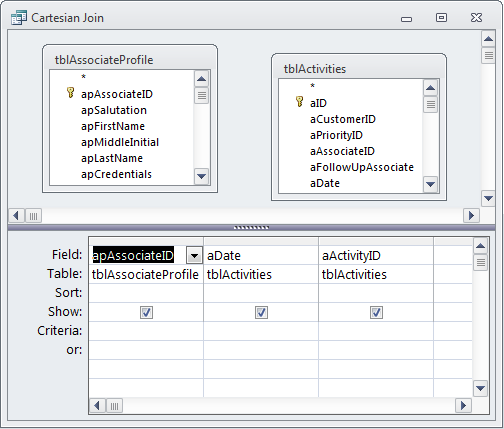
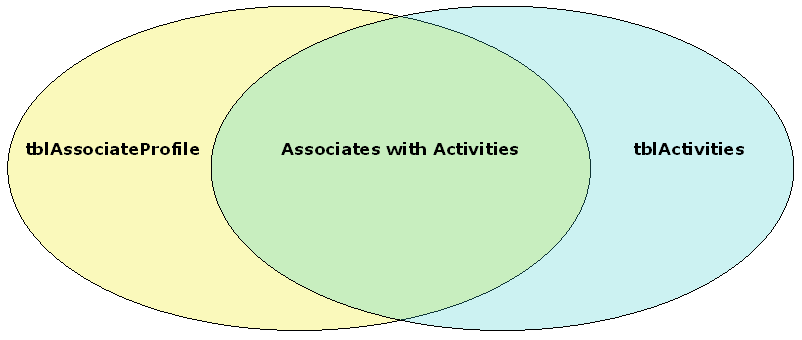
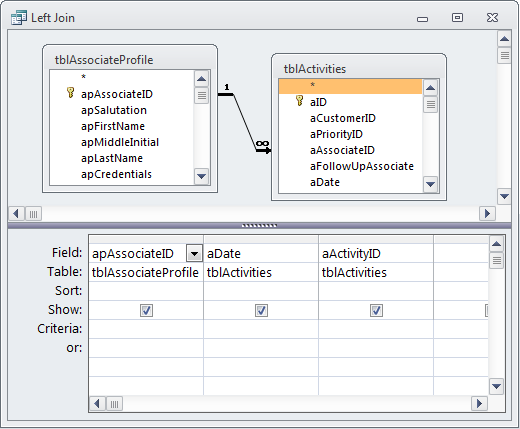
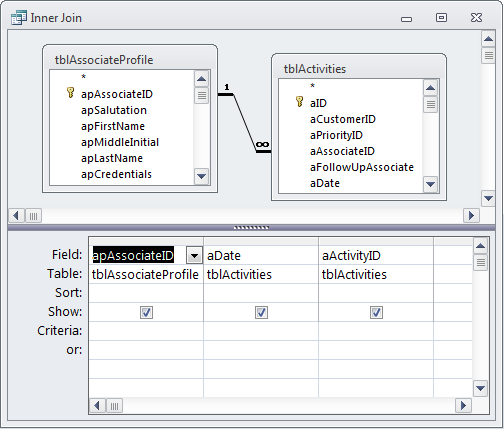
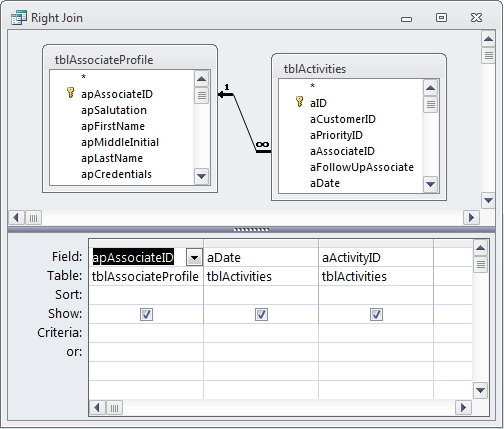
Query Joins...
A query allows you to pull information from one or more tables. There are three basic ways of joining table/s together...
A query allows you to pull information from one or more tables. There are three basic ways of joining table/s together...
Left
Inner
Right
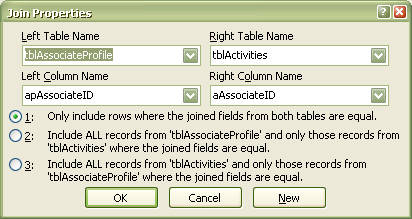

LEFT join and RIGHT join simply signify the way the tables got loaded into the QBE window. Typically, I put the MAIN table (or PARENT table) on the left, which means it's the first one in the QBE window. In this example, I placed tblAssociateProfile in first so it becomes the left most table.
If I had put tblActivities in first and I wanted to correct that, I would click the New button bringing up the Create New window pictured below. I could then make my correction there.

The difficult I do immediately, the impossible takes a little bit longer.


Queries
| Tips (Main) |
| Home |
| Using Parameters in a Crosstab Query |
| Action Query Errors |
| OrderBy OR Order By |
| Memo field is truncated when exported to Excel |
| Append and/or Update Data to Table Created Dynamically |

The LEFT join will return all the Associates whether they have Activities or not, Figure A Selection 2. However, since you will see Associates that have no Activities this may be confusing to your End Users.

When you first drop a second table in the QBE window, if you have previously related via the Relationship window, you will immediately get an INNER join. This type of query is the most common used query as it produces desired results...
In this scenario you will get only those records included in both tables, see Figure A. That means all Associates that have Activities. You will not see any Associates that do not have activities OR any Activities that do not have Associates. (Which, providing you have created a relationship, should never happen. Without a relationship this could [and will] happen!)
In this scenario you will get only those records included in both tables, see Figure A. That means all Associates that have Activities. You will not see any Associates that do not have activities OR any Activities that do not have Associates. (Which, providing you have created a relationship, should never happen. Without a relationship this could [and will] happen!)



The RIGHT join will return all the Activities whether they have Associates or not, Figure A Selection 3. Again, this type of return should never happen if you provided a relationship between the two tables.


A CARTESIAN join (or product) is no join between tables. This produces a query the will give you every combination possible between the tables in the QBE window. Now you are saying to yourself, what good is that?
This type of query is useful when you have a report that you want multiple copies of. The drawback to using this type of query is the query is *Read Only!* and there is no way to alter that. (To see an example using a CARTESIAN product click here.)
This type of query is useful when you have a report that you want multiple copies of. The drawback to using this type of query is the query is *Read Only!* and there is no way to alter that. (To see an example using a CARTESIAN product click here.)

